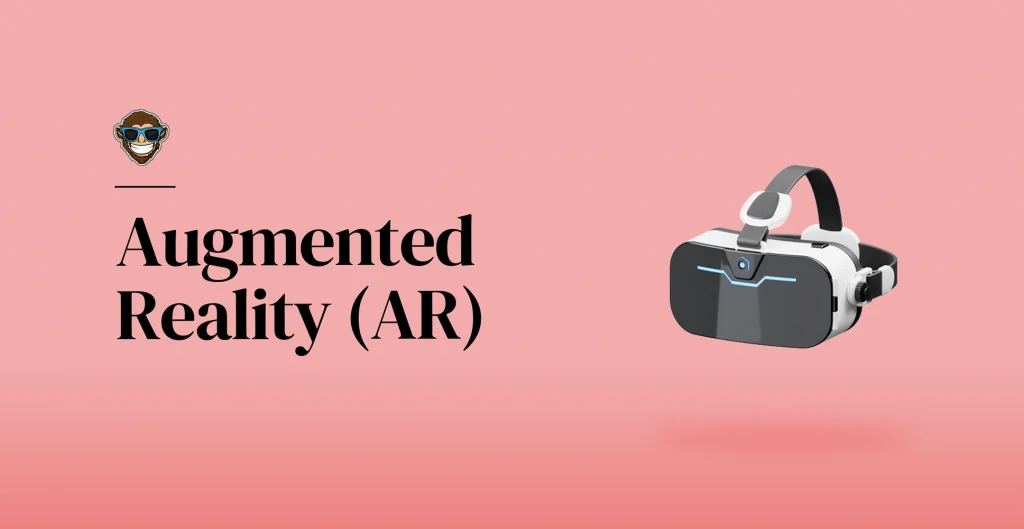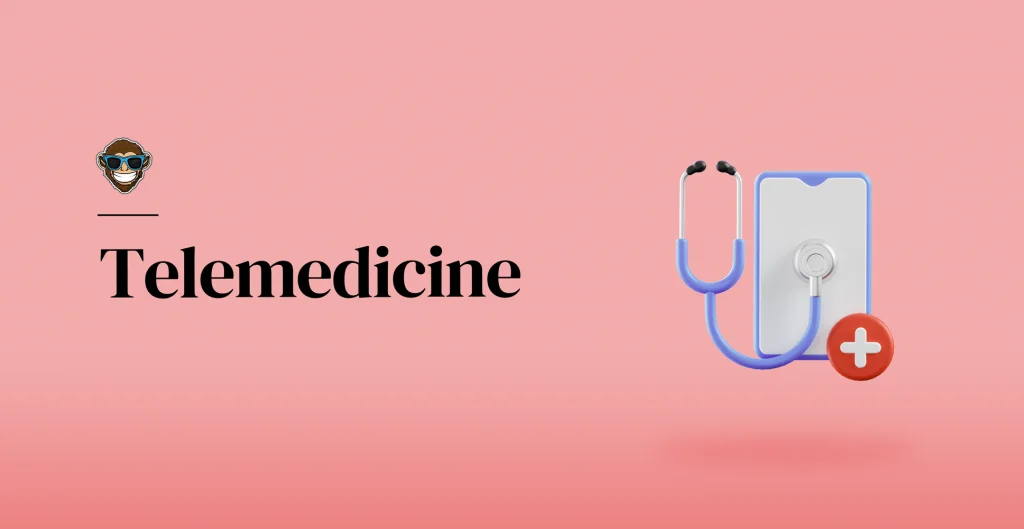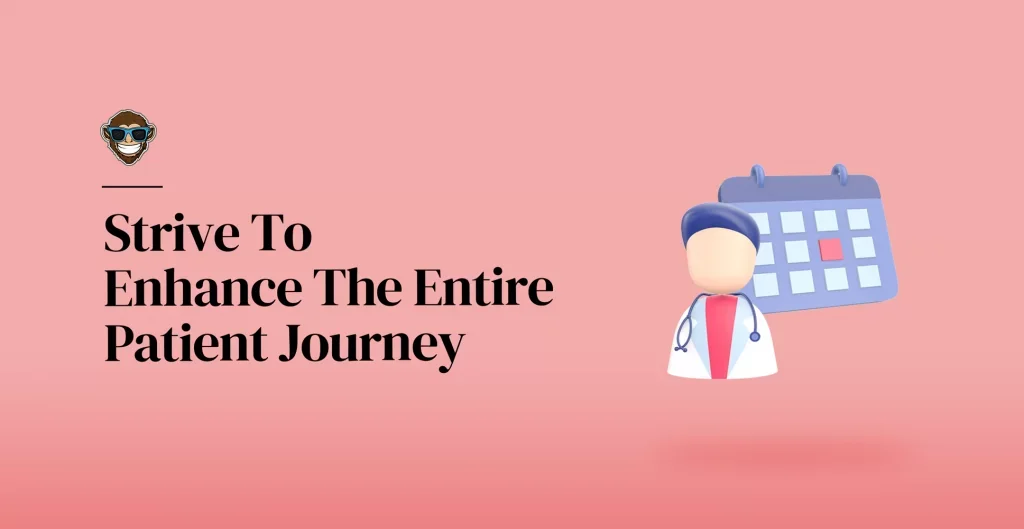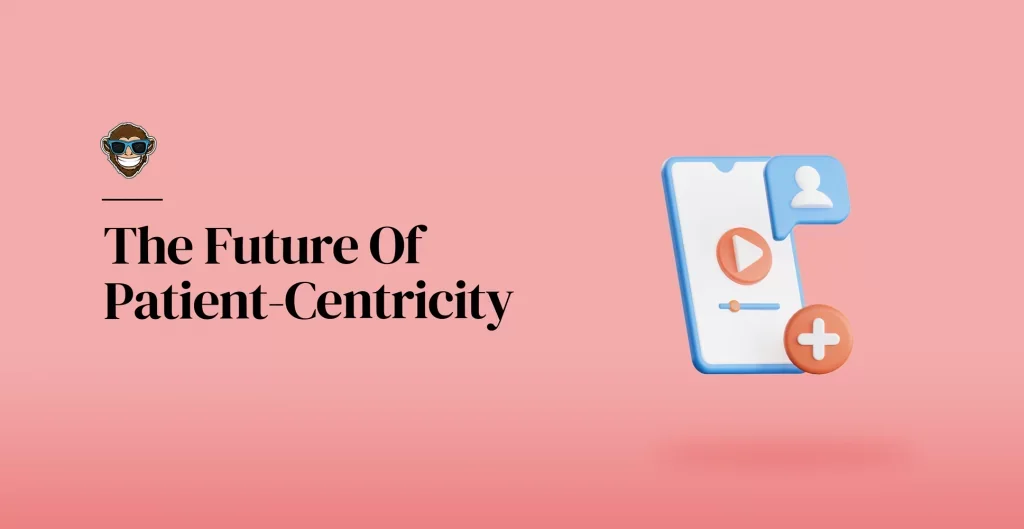Patient centricity is of critical importance for the entire global healthcare ecosystem because it drives the motivation for patients to participate in their own medical care delivery, resulting in better outcomes.
Have you gone to the doctor recently? Or maybe to the ER? Haven’t you experienced delays and a lack of quality in attention and in delivering medical care? Or perhaps a lack of empathy, like you weren’t a priority? If you have, you’re not alone. It’s no secret that medical services across the globe are struggling to keep up with the growing needs of patients that demand faster, more efficient health care. The ever-increasing demand, and the healthcare ecosystem’s inability to keep up with it, have resulted in patient unhappiness. For instance, in the US, a study suggests that 81% of patients rate their healthcare experiences poorly despite the country housing top-tier medical schools and some of the most exceptional hospitals in the world. You would think that being home to one of the most qualified healthcare systems in the world translates to exemplary medical attention. Still, the truth is patient centricity is far from becoming a reality, even among champion healthcare facilities. Hence, the importance of patient centricity.
With the rise of mobile technologies, the services and goods we access daily are prioritizing customer needs to keep up with the increasingly high benchmark that defines what customers want. Restaurants are embracing online services, retail stores are adopting faster delivery services, and even insurance companies are facilitating faster claims and payouts to increase user happiness. Why should the healthcare system be any different? Patient centricity must be one of the cardinal priorities for healthcare organizations, regardless of their location, infrastructure, or budgetary capabilities. That also includes pharmaceutical and insurance companies, which have a well-known reputation for overseeing customers’ needs in lieu of monetary gain.
So, as the world witnessed the end of the deferential patient and modern technologies drive the rise of the healthcare service consumer, most medical organizations across the industry are wondering how they can prioritize user satisfaction and enforce patient centricity. And although there’s still a long way to go to achieve a fully patient-centric healthcare ecosystem, it’s crucial to understand where to begin and how to develop care delivery models that revolve around the patient. So here’s Foonkie Monkey’s take on how to bring patient-centricity back to healthcare.

But What Exactly Is Patient Centricity?
We’ve all been there. The awful medical attention in ERs, the long waiting times at the doctor’s office just to be prescribed some generic medication, and the never-ending paperwork just to get decent medical care. Most of us have also been lucky enough to experience outstanding healthcare services every now and then. However, “every now and then” just doesn’t cut it anymore. As a matter of fact, about 67% of Americans claim that their healthcare providers don’t even bother to take the time to empathize with their needs or understand their health concerns. That’s a staggering figure; however, we shouldn’t be surprised by it, given the heavy administrative burden healthcare providers have to deal with daily. Additionally, there’s an overwhelming amount of manual processes and time pressures they have to manage that make it almost impossible for them to give each patient the attention they deserve. Here’s where patient centricity comes into play.
Patient-centered care is a paradigm shift within the entire healthcare ecosystem where a patient’s specific health needs, conditions, and outcomes are the driving force behind all medical decisions regarding that same patient. In patient-centric medical services, patients play an active role in the flow of healthcare processes, making them partners with their healthcare providers instead of passive “clients.” Medical providers, on their part, not only treat their patients clinically, but they also get involved in their emotional, physical, mental, social, and financial situations to try and empathize with them on a deeper level. Sounds like a dream, right? Well, patient-centricity is what healthcare systems aim for but implementing it is easier said than done. Simply slapping the term “patient-centric medical care” on a hospital front door won’t do the trick. Healthcare institutions worldwide have to really grasp the concept, understand it, and ultimately enforce it by putting the patient at the heart of the decision-making process and the operations within medical organizations.
The shift to patient-centricity in healthcare will not only require a change in the current mindset of stakeholders. Transforming to a patient-centric healthcare system also implies adopting some technological advancements, such as healthcare apps, that will allow for that mindset to change and for that change to be sustainable, scalable, and applicable to all areas of medical care. Granted, most people usually consider technology as the mediator for less personal and less organic experiences. Nonetheless, when deployed properly and effectively, technology can help the healthcare ecosystem become patient-centric by making the whole ecosystem more responsive and adaptable to the constantly changing patient needs. This point is crucial because today’s healthcare ecosystem is disjointed and highly disconnected. The undeniable fragmentation of modern medical care is happening because all the different stakeholders have different objectives and different and incompatible systems, creating a void of information that worsens the efficiency of medical care delivery.
So, to allow patient centricity to become the norm, the entire global healthcare ecosystem must become an interoperable network. This way, it can achieve a global mindset that revolves around optimizing patient outcomes. When this common goal becomes commonplace among stakeholders and institutions, we can begin to talk about patient centricity. In the meantime, we want to touch on some of the most crucial elements of patient centricity and some of the ways we can start to shift the current mindsets and paradigms within the healthcare system to achieve a patient-centric healthcare ecosystem soon, hopefully.

What Are The Main Elements of Patient Centricity?
Like we mentioned above, simply claiming to be patient-centric doesn’t make an institution patient-centric. Instead, patient-centered medical care involves certain elements and attitudes that encourage active collaboration between stakeholders and enable sharing the decision-making process between patients, their families, and healthcare providers. This process allows for designing and managing customized and comprehensive care plans for all patients, regardless of their conditions, origin, or status.
Patient-centered care and its definition have several elements that affect how healthcare systems, stakeholders, and institutions are organized and how they design and manage their treatment avenues for their patients. These are some of those elements that define patient centricity:
- The healthcare institution’s mission, vision, values, and quality-control drivers must be aligned with the patient’s needs and satisfaction and enforce patient-centered goals.
- Medical care must be collaborative, interoperable, and accessible, meaning that the proper medical care must be provided at the right time, at the right place.
- Healthcare services focus on the patient’s physical, emotional, and mental comfort and well-being.
- The patient’s and their family’s religious preferences, moral values, cultural traditions, attitudes, political inclinations, and socioeconomic conditions must always be respected.
- The presence of family members during medical care and treatment courses must be encouraged, facilitated, and respected.
- All information regarding a patient’s condition must be fully disclosed promptly to allow patients and their families to make informed decisions.
So, as you can probably conclude by now, the primary goal of patient centricity, and one of its main benefits, is to improve health outcomes. This way, not only do patients see themselves benefitted, but healthcare providers, systems, and operators benefit as well through enhanced satisfaction and reputation. Moreover, productivity and morale among clinicians increase with the reduction in poor outcomes and system overcrowding. All these benefits can ultimately end in less expensive healthcare expenditure, more efficient medical care, and, more importantly, more lives saved.
Now, let’s look at the three main ways the healthcare system mentality must shift to accomplish a fully patient-centric healthcare ecosystem.

Harness Modern Technologies, Tools, and Data Analytics
As it usually happens, technology is at the forefront of most–if not all–innovation efforts and advancements in the medical field. Actually, we could even say that healthcare is currently at its apex when it comes to experiencing the age of digitalization, which makes this the perfect moment to start globalizing and enforcing the concept of patient centricity. That all sounds great; however, healthcare is a highly regulated industry which makes it notorious for slowly adopting modern trends. Still, however slowly, most healthcare systems and institutions worldwide are starting to effectively integrate modern IT solutions and technologies into their traditional medical practices and operations. And recently, all those technical innovations have begun to influence all healthcare pillars and workflows: surgeries, consultations, research studies, and even insurance claims have been modernized to give way to patient-centered medical care.
Some technologies have already become essential pillars to modern healthcare, while others are still being tested by providers. Whichever the case, stakeholders are constantly looking for new, disruptive technologies to improve consumer-facing services and enforce patient-centered healthcare in all of their practices. Whichever the case, here are some of the top technologies that healthcare players must integrate into medical assistance to ensure the shift to patient centricity takes place successfully:

Artificial Intelligence (AI)
As usual, AI is at the forefront of innovation for all sectors, and healthcare is no different. AI’s popularity in the medical field is growing exponentially and is starting to save many human lives and dollars, with a predicted annual savings of $150 billion by 20216. These flourishing numbers are encouraging players in the healthcare arena to invest millions in AI and promote its adoption in systems and institutions worldwide. As a result, mobile AI-powered healthcare solutions are exponentially increasing, and the medical-care market realizes the benefits of AI, one of which is patient centricity.
Currently, AI applications in the medical industry, such as AI-powered healthcare apps, robot-assisted surgery, chatbots, and virtual assistants, are the main driving forces behind patient centricity. These solutions have helped automate hundreds of manual processes, turning the entire medical care workflow into a personalized, efficient, and patient-specific process. For instance, Artificial Intelligence algorithms have helped physicians create a modern generation of radiology and imaging tools that help pinpoint and narrow down diseases like cancer in minutes or even seconds. This way, AI can also lead to a predictive analysis by helping process a patient’s medical data and automating diagnosis. Namely, AI can use any piece of medical information and analyze it to identify specific infection patterns, disease progression, suggest treatment avenues, and pinpoint at-risk patients.
It can also help physicians predict how tumors might progress and outline patient-specific therapies based on the individual’s genetic makeup. Through the use of these and more AI applications, stakeholders in the healthcare industry now have the capability to gather and analyze all the valuable medical information to promote patient-centricity and, hopefully, change the future of human health.

Augmented Reality (AR)
AR is a newer technology than AI and is one of the latest innovations to be adopted by the healthcare industry. AR-based apps and devices are increasingly employed in facility oversight, preventive maintenance, hospital management, and patient and physician education. In that sense, AR experiences benefit patient-centricity because they help empower patients to understand more about their conditions and take charge of them, becoming active participants in their healthcare outcomes.
AR-powered apps and devices also help improve the quality of a patient’s visit to any medical facility by helping train physicians and their teams to perform any range of operations, from complex surgeries to uncomplicated dissections. Similarly, medical students and trainees can better visualize the human body and point down health issues in AR scenarios that simulate real life. And, with modern AR innovations, doctors and surgeons can not only operate faster and more accurately, but they can diagnose and treat their patients more efficiently by having access to real-time patient data in a faster, safer way than ever before.

Telemedicine
A crucial aspect of patient-centric medical care is the patient’s comfort. And whether it’s for convenience, physical or geographical limitations, transportation issues, or age-related incapacities, telemedicine has allowed patients to access medical services from the comfort of their homes. Additionally, with telemedicine technology, healthcare professionals can quickly evaluate, diagnose, and treat their patients at a distance, releasing some workload and relieving the pressure of too many in-person appointments. As a result, they can dedicate more time and attention to each individual patient, making them feel more involved and empowered and helping the entire system get one step closer to achieving patient centricity.

Big Data Analytics (BDA)
The healthcare system and its players collect massive amounts of data and have done so for ages, no surprise there. However, raw data is basically useless, especially when it comes in huge waves, and is amassed indiscriminately without making any sense of it. Harnessing the full potential of these never-ending data lakes, or Big Data, is crucial to gain insight from it and the only way to do that is by using BDA. Paired with AI, BDA can facilitate data analysis and insights that help physicians and stakeholders deliver more personalized and efficient medical care at lower costs. For example, an AI-powered diagnostic solution can detect tumors on a chest MRI in seconds using BDA from data from previous MRIs with identified tumors. This way, BDA can pair up with other technologies, creating efficiencies that drive faster diagnostics, free up physicians’ workload, focus on patient-centric care, and help build human connections.
Healthcare’s AI-driven future is also improving interoperability, which is critical for data-sharing among healthcare stakeholders and successful BDA. Interoperability encourages collaboration between institutions and reduces the inefficiencies that the lack of communication or standard system often produces. So, once institutions have shared patient data efficiently and have their goals for improving patient outcomes aligned, then they can use that data to make informed decisions and adequately enforce patient-centric care.

Collaborate With Other Industries
Even though we’re mostly talking about the healthcare industry, medical care is only one part of the entire ecosystem. Medical device developers, biopharma and pharmaceutical companies, laboratories, insurance companies, and healthcare app developers are some other stakeholders whose functioning is relevant to health outcomes. They can develop transformative drugs, groundbreaking devices, and mobile solutions that can further increase the efficiency of the medical system and help accomplish patient-centricity on a broader level. For this reason, patient-centric healthcare solutions must work hand in hand with other stakeholders to improve the outreach of medical care and implement collaboration programs with them to work in tandem toward one day accomplishing a fully patient-centric system.
Pharmaceutical companies, for one, can help the system achieve patient-centricity by finding a balance between patient needs and regulatory limits via clinical trials. For example, only 16% of oncology patients claim to know about clinical trials being a free treatment option for them. Approval processes for cancer treatments can be lengthy and heartbreaking and don’t often end in encouraging health outcomes. This way, clinical trials can be a simple alternative for many cancer patients that don’t have time for eternal approval processes. They can not only get a deeper understanding of their disease and treatment, but pharma companies can also build a stronger bond with patients and physicians. This bond can help them facilitate two-way–or three-way–communication highways that can encourage patient centricity.
But, believe it or not, healthcare can also learn from other industries that have nothing to do with medical care. Industries like retail are light years ahead of healthcare in terms of customer-centric services and keeping their user’s needs at the forefront of product and service development. For instance, Amazon is known to place its customers first and offers benefits like two-day shipping, prime discounts, and easy returns to keep their clients happy. But what does Amazon have to do with healthcare? Well, to achieve patient centricity, the medical system could stand to learn from disruptors like Amazon, who go above and beyond to anticipate their customers’ needs. Sure, Amazon works in retail, a poorly regulated industry, while healthcare has to jump through countless regulatory hurdles to barely function. But while it’s true that the healthcare industry may struggle to achieve patient centricity as fast as retail, innovating customer service in a regulated industry isn’t unthinkable. For example, FinTech companies like Venmo have managed to succeed at building customer service highways such as Amazon’s where the user is king, and all services are catered to them, even despite the strict regulatory measures that apply to banking and financial services.
In a nutshell, the healthcare system and its stakeholders can significantly benefit by learning from other industries and customer-centered companies such as Amazon and collaborating with them when possible. This collaboration can help the medical industry’s participants cross-apply insights from other thriving sectors. Furthermore, healthcare can refer to other industries to identify how it can pinpoint patients’ pain points, target and solve them, and thus design more patient-centric care regardless of regulations or other technological or technical limitations.

Strive To Enhance The Entire Patient Journey
When referring to a patient’s journey, most stakeholders in the healthcare industry focus on how a visit to the doctor goes or maybe how successful a hospital stay is. However, these events are only a minuscule part of the entire range of services and medical care that any patient receives. And, as the name clearly states it, patient-centricity must revolve around the patient and their entire journey, from beginning to end, not just when they step in and out of a hospital.
Moreover, patient-centricity expands well beyond simple in-hospital patient experience and encompasses the unified medical care experience, from their family and home environments to the relationship with their physicians. Additionally, efficient data sharing sets the ground for interoperability, optimizing the entire patient journey and making medical care an enjoyable experience rather than stressful. For instance, a patient who goes for a consultation is told to be referred to a diabetes specialist. That patient’s journey would be significantly improved if, when they get to the specialist, all their medical data, images, blood tests, charts, and overall medical history have all been studied by the physician and entered into a global system. This interoperability eliminates inefficiencies within the system. It also annuls the need for that patient to either explain why they’re there or wait for the physician to gather all their medical information, which could take weeks.
A compelling patient journey relies on the trust between the patient and the system where all stakeholders have each other’s best interest as a priority. And, to preserve that trust, stakeholders must view the patient journey as just that: a journey, a unified experience, not a momentary visit to the doctor.
This unified, combined experience encompasses the following:
- All the experiences a patient has with healthcare providers, urgent care and ER facilities, pharmacies, clinical trials, and research initiatives.
- All the experiences a patient has at home. These experiences include social and economic status, physiological status, treatment adherence, family environment, and any support the patient receives from any individual inside and outside healthcare settings.
- All experiences a patient has with medical devices and remote monitoring initiatives that happen both in and out of a clinical setting.
All of these points, and more, are paramount to understanding the entire scope of the patient journey. And if you look carefully, you’ll see that in all the points we’ve touched on in this article, technology and customer service seem to be the pillars of a successful patient journey and, therefore, are the gateway to patient centricity. In that sense, technology is the force behind the shift in the traditional healthcare mentality. It is the secret to moving away from passive disease management and towards a proactive disease prevention model.
So, optimizing the entire patient journey, from home to hospital and then back to home, will indeed reveal how the industry can improve patient outcomes and bolster patient-centric medical care.

The Future Of Patient-Centricity
Humans expect outstanding attention whenever and wherever we access goods and services. That shouldn’t come as a surprise. We all love excellent customer service, don’t we? Then why should healthcare be any different? As patients, we expect our healthcare experiences to be as enjoyable, easy, and dignified, if not more, like all our other everyday experiences. However, medical services worldwide have drifted away from the patient and had sadly become generic and passive.
What’s more concerning, they have forgotten that the patient is the center of healthcare. So, to remain relevant, competitive, and above all, humane, it’s imperative for the healthcare system and its stakeholders to start catching up to the needs of their patients. Healthcare must rise to the standards for customer service set by other industries and start putting the patient at the forefront of care and service design.
Gladly, some systems seem to have understood the importance of patient centricity and have started to adopt it, yielding better health outcomes, which is the ultimate goal of healthcare. And however difficult patient centricity is for less developed or innovative institutions, this can’t be an excuse to keep putting patients last. Patient centricity has to start somewhere, and hopefully, the road is not too long, and we can begin to work together towards a more human-centric healthcare system.
If you have any questions about this article or want Foonkie Monkey to work on your next project. Let’s talk!
